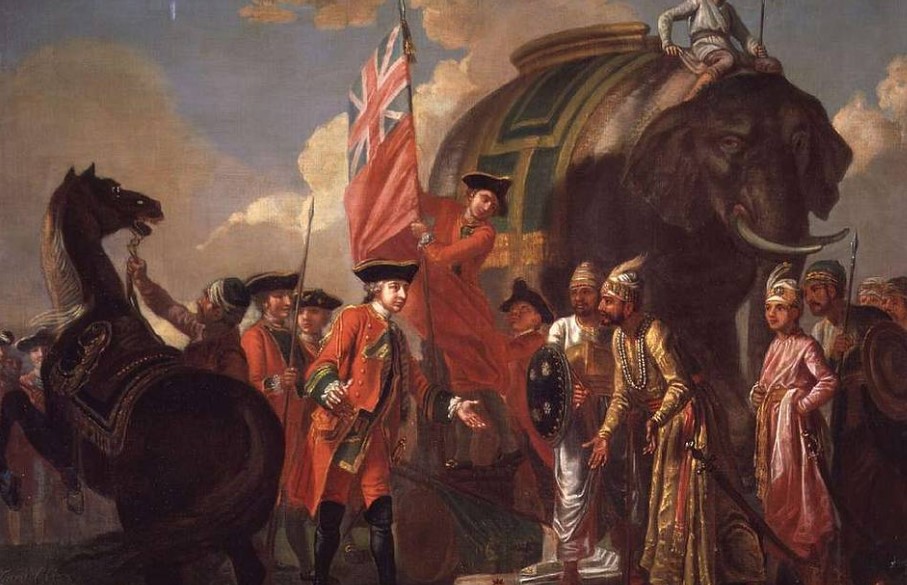
Socio-Religious Reform Movements | Modern History Short Notes
Modern History Short Notes – Socio-Religious Reform Movements notes for UPSC Prelims, State Services and other examinations.
Home » UPSC Study Materials » Prelims Express » Modern History Short Notes » Arrival of Europeans | Modern History Short Notes
Arrival of Europeans notes/study material for preparation of UPSC, BPSC, UPPSC other State PSC and other Examinations.
From 7th century onwards, India’s merchandise trade with European countries was dominated by Arabs who did not allow any other to encroach these routes. Due to the highly profitable nature of trade and huge demand of Indian spices and merchandise in Europe, European countries envied Arabs and wanted to find an alternative direct route to India. To find the alternative route, European sailors started taking long voyages
It was the Portuguese who succeeded and discovered alternative sea routes to India. Portuguese traveler Vasco da Gama discovered an alternate route from Portugal to India via Cape of Good Hope. He first reached India in May 1498 in Calicut. He was received by Zamorin who was the ruler of Kozhikode.
Portuguese were also the first Europeans to settle and colonize India. They came to India mainly to trade in spices but gradually made their colonies here.In 1503, Francisco de Almeida was sent as Governor and Viceroy of ‘Estado da India’( Name the Portuguese gave to that part of their empire in India).
In 1510, He was replaced by Alfonso de Albuquerque. Below are the worth noting points about Albuquerque:
Due to the above reasons, Albuquerque is known as the real founder of the Portuguese colonial empire in India
The Portuguese empire in India could not last long and soon the Portuguese had abandoned India in favor of the other European powers. Following are the worth noting points about the decline of Portuguese empire in India :
Due to the above reasons, By the 19th century, Portuguese became confined to only Goa, Daman and Diu.
Among the major European powers, The French East India Company was the last to be formed. Following are the worth noting points about the French East India Company.
The English East India Company was established on 31 December 1600 as per the Royal Charter issued by the Queen of England, Elizabeth I.
The English East India Company had sent Captain Hawkins to the court of the Mughal Emperor, Jahangir in 1608 to secure permission to establish a factory at Surat.
Initially their request was turned down by Jahangir However, in 1613, Jahangir agreed and issued a firman permitting the East India Company to establish its first factory at Surat.
English established their second factory at Masulipatnam in 1616.
In 1639, the British purchased the land in Madrasapattinam from Raja of Chandragiri and established Fort Saint George there which later became the part of Madras Presidency.
In May 1661, as per the marriage alliance between Charles II of England and Catharine of Braganza, the Portuguese king’s daughter, Bombay was given to Charles II as dowry.
In 1668, a royal charter was issued which gave Bombay to the East India Company for the rent of 10 pounds per year.
By the year 1690, the East India Company purchased three villages namely, Sutanuti, Govindpur and Kalikatta, which later grew into the city of Calcutta. The British built another fort here and named it Fort William after the English King William III.
All the factories and trading centers which the English established along the coast of India were placed under either Bombay, Madras or Calcutta Presidency.
Though the British and the French came to India for trading, they slowly became involved in the politics of India. During that time, the entire south India was divided into minor Rajas, Nawabs
and chieftains who fought with one another to maintain their supremacy.
Both English and French wanted to exploit this situation and wanted to establish their hegemony. This led to Anglo-French rivalry in India.
Due to this rivalry, three Carnatic wars occurred between the English and French and finally the British emerged victorious and established their hegemony in India.
Following are the worth noting points about the three carnatic wars:
The Third Carnatic War was a decisive war as it ended the French ambitions to create a colonial empire in India and the British became the supreme European power in India. Following were the main reasons for the failure of the French and Success of British in Carnatic wars :
In the next Chapter, we will study about the Bengal and the Battle of Plassey and Buxar.
You can study complete ancient history in a chapterwise format here : Modern History Chapter-wise notes
You can solve ancient history chapterwise MCQs here : Modern History Chapter-wise MCQs
You can read all the CivilsCracker Explained articles for Ancient History here : CivilsCracker Explained
You can read all the UPSC free study materials for all subjects here : Free UPSC study materials for all subjects
You can solve chapterwise MCQs for all subjects here : Chapterwise MCQs for all subjects

Modern History Short Notes – Socio-Religious Reform Movements notes for UPSC Prelims, State Services and other examinations.
We are adding new Notes, Chapterwise MCQs, Quizzes, Previous Years Questions everyday
We are adding new Notes, Chapterwise MCQs, Quizzes, Previous Years Questions everyday